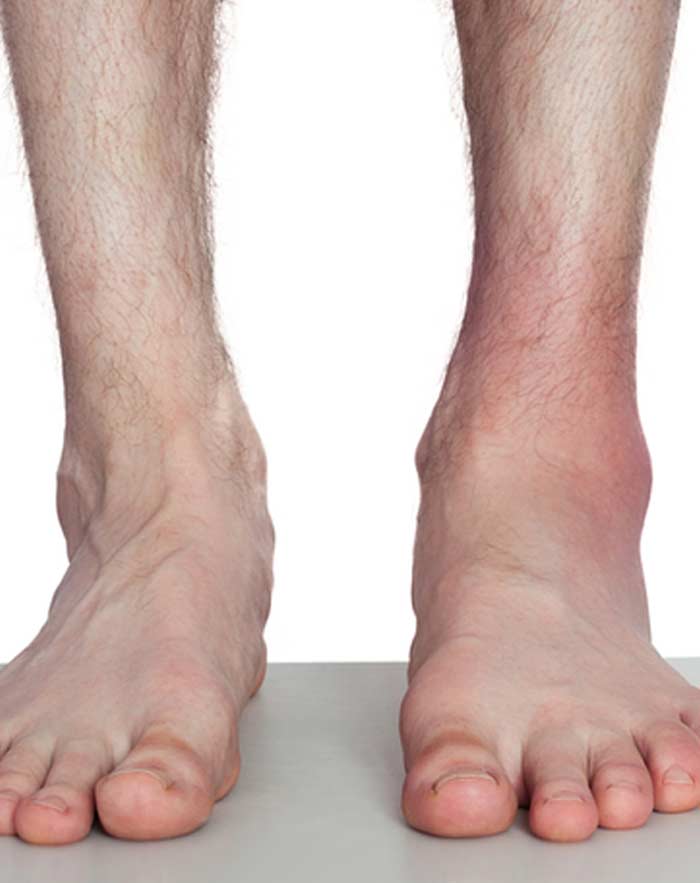
A sprain occurs when a ligament is torn or stretched.
Ligaments connect two bones together. There are varying degrees of sprain severity. The most common joint that people sprain is the ankle.
Causes
This injury happens when a ligament is overextended or torn. This puts significant stress on the joint as well. The following are common causes of sprains:
- Knee: A sprain in this joint is often due to pivoting
- Thumb: A sprain in this joint is common in racquet sports due to overextending the thumb
- Ankle: A sprain in this joint often occurs due to exercising or walking on a surface that is uneven
- Wrist: A sprain in this joint is common during a fall when someone lands on their outstretched hand
Certain factors may increase the likelihood of someone experiencing a sprained joint:
- Fatigue
- Environmental conditions, such as wet or icy surfaces
- Poor conditioning
- Improper warm-up before physical activity
- The wrong footwear or other poor equipment


Symptoms
The severity of the sprain ultimately determines the symptoms a patient may experience. This also determines how intense the symptoms may be. The following are possible:
- Pain
- Bruising
- Feeling a “pop” when the sprain occurs
- Swelling
- A reduction in the sprained joint’s mobility
Diagnosis
The doctor will visually inspect the affected joint to look for the signs of a sprain, such as bruising and swelling. They will also look for tender or painful areas. Assessing the severity of the symptoms can help the doctor to get a better idea about the grade of the sprain.
The following describe the different sprain grades:
- Grade 1: The ligament fibers are slightly torn and there may be microscopic tearing.
- Grade 2: The ligament has a partial tear.
- Grade 3: The ligament is completely torn.
To make sure that a bone injury is not present, it is common to order general X-rays. To look at the ligaments and other soft tissues, an ultrasound or MRI might be recommended.
Treatment
Immediately following a sprain, it is important to stop using the affected joint. Elevate it and apply ice. Compressing it is also ideal. After this, the patient should see a doctor to get an accurate diagnosis.
Medications to reduce swelling and pain are common. This typically involves non-steroidal anti-inflammatory drugs. In the most severe cases, a stronger medicine may be prescribed short-term. The following are additional non-surgical treatments:
- Immobilizing the affected joint for a short time
- Using crutches to rest a sprained ankle or knee
- Physical therapy to help strengthen the joint and prevent stiffness
If non-surgical treatment does not heal the sprain, surgery might be needed, but this is rare. The procedures may include reconstructing the ligament that was torn or arthroscopy to repair damage. Surgery is typically followed by immobilization and rehabilitation.
If someone suspects that they sprained a joint, it is important to get an evaluation. The doctor can determine the grade of the sprain so that the proper treatment is administered.
